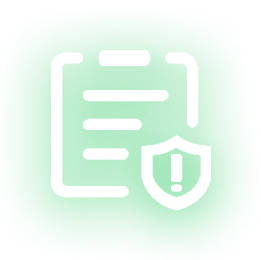A functioning website is the bedrock of digital operations, customer trust, and revenue. While most organizations understand the need for website monitoring, simply having some checks in place is far from sufficient. A poorly designed system risks missing threats, performance degradation, or compliance gaps—jeopardizing user trust and business continuity. Below, let’s unpack these common pitfalls in website monitoring and overcome them with proactive strategies.
1. Overlooking Comprehensive Coverage
Focusing solely on uptime (HTTP status codes) while neglecting critical security and integrity checks, such as SSL certificate expiration, DNS block, or website defacenment. Websites are dynamic ecosystems. New features launch, third-party integrations change, traffic patterns fluctuate, and threat actors constantly evolve tactics. Monitoring configurations require regular review and adjustment. Failing to update thresholds (e.g., acceptable load time) and alert rules means critical failures in new sections or APIs go unnoticed. Effective website monitoring is an ongoing process, not a one-time setup.
2. Ignoring False Positives and Neglects
Rigid alerting thresholds are another common trap, leading to alert fatigue or critical oversights. Alerting on every minor blip or configuring overly sensitive thresholds creates a flood of notifications. Teams quickly become desensitized, leading to ignored alerts and missed genuine emergencies. When systems trigger alarms for minor latency spikes or false DNS failures, teams may dismiss genuine issues as noise. Conversely, silent DNS outages or gradual content tampering might go unnoticed entirely. By correlating alerts with contextual data, teams can prioritize high-impact incidents.
3. Disregarding Performance Metrics
A website being technically “up” (HTTP 200) doesn’t equate to a good user experience. Slow page loads, sluggish API responses, or timeouts during multi-step processes frustrate users and drive abandonment. Website performance metrics beyond uptime, like Time to First Byte (TTFB), are frequently sidelined, harming user retention. Tracking these performance metrics helps preempt crashes and optimize experiences. Real-user monitoring data further identifies bottlenecks impacting specific regions.
4. Neglecting Content Integrity
Malicious actors often don’t take websites fully offline; they subtly deface pages, inject spam links, or embed malicious code hoping to operate undetected. Relying solely on uptime checks misses these critical security and brand integrity issues. Monitoring for unauthorized content changes (defacement), the presence of specific keywords , and actively scanning for known malicious code is essential for early breach detection and brand protection.
5. Overlooking Geographic Blind Spot
Your website might perform flawlessly from your headquarters but be painfully slow or unreachable for users in key international markets. Monitoring solely from one or two locations provides a dangerously incomplete picture. Globally distributed monitoring points are essential to understand regional performance issues, localized DNS problems, or CDN effectiveness, ensuring a consistently good experience for your entire audience.
6. Siloed Views and Lack of Context
Using disparate tools for uptime, performance, security, and DNS creates fragmented visibility. When an issue arises, correlating data across these silos is time-consuming. Did slow load time cause the failure, or is it a separate DNS issue? A comprehensive website monitoring platform that integrates availability, performance, DNS, SSL, and security checks provides unified dashboards and correlated alerts, drastically speeding up root cause analysis.
Tips: Website monitoring is not a passive checkbox exercise; it’s an active, ongoing strategic discipline. By confronting these common pitfalls head-on – especially the corrosive effect of unmanaged false positives – organizations can transform their monitoring from a potential liability into a robust shield. This ensures maximum uptime, safeguards against evolving threats, and ultimately protects the user experience and brand reputation in an increasingly complex digital ecosystem.
Choose a website monitoring platform that unifies availability, performance, and security insights. Adopt proactive and holistical monitoring strategies to sidestep these common pitfalls.
All features free for life for the first 500 users!
Sleep easy—your website is always protected!














